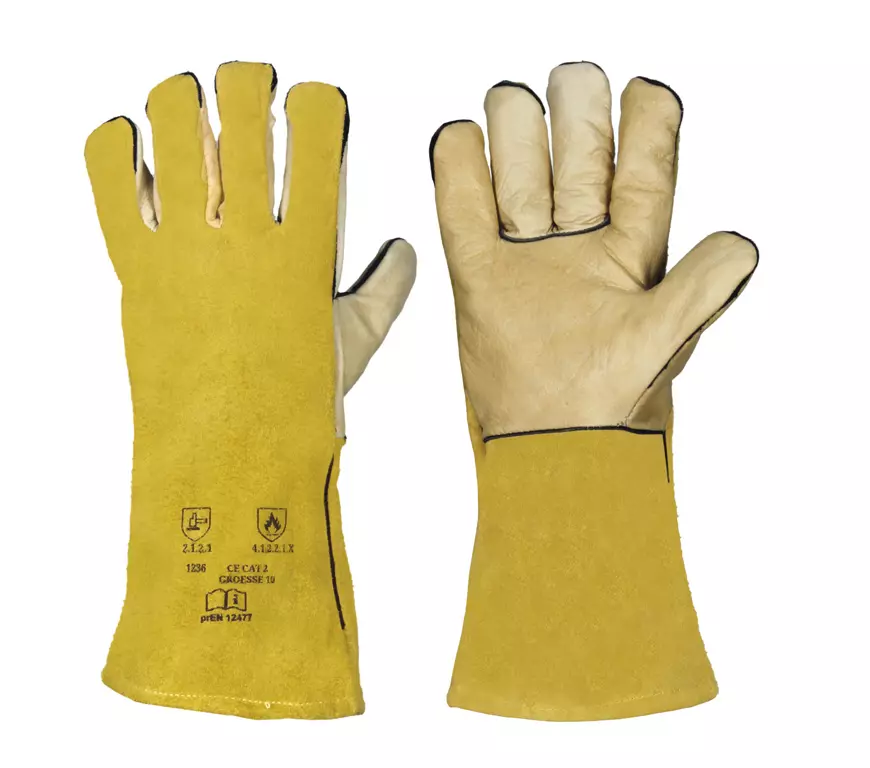
Features You'll Love

Grip Finish · Rough
The surface texture or coating on the palm and fingers that determines how securely the gloves can grip tools, materials, and surfaces during work tasks.

Cuff Style · Open
Determines how the glove secures around the wrist, affecting fit, protection from debris, and ease of putting gloves on and taking them off.

EN 407 · Burning Behaviour Level 4, Molten Metal Resistance Level X
Provides the highest level of protection against catching fire when exposed to a naked flame. After the flame is removed, the material will stop burning within 2 seconds and stop glowing within 5 seconds.
This product has not been tested for resistance against splashes of molten metal. It provides no claimed protection and should not be used for welding, foundry work, or other tasks with molten metal risks.
Richard Leipold
5-Finger-Combination Yellow Lined Length 35cm Size 10 CE CAT 2, 60 pairs
5-Finger-Combination Yellow Lined Length 35cm Size 10 CE CAT 2, 60 pairs
4.8 / 5
277,98 €
Price per 6 packages (60 pairs)
4,63 € / pair
Choose size
Free delivery
Features You'll Love

Grip Finish · Rough
The surface texture or coating on the palm and fingers that determines how securely the gloves can grip tools, materials, and surfaces during work tasks.

Cuff Style · Open
Determines how the glove secures around the wrist, affecting fit, protection from debris, and ease of putting gloves on and taking them off.

EN 407 · Burning Behaviour Level 4, Molten Metal Resistance Level X
Provides the highest level of protection against catching fire when exposed to a naked flame. After the flame is removed, the material will stop burning within 2 seconds and stop glowing within 5 seconds.
This product has not been tested for resistance against splashes of molten metal. It provides no claimed protection and should not be used for welding, foundry work, or other tasks with molten metal risks.
Product description
The palm is made of grain leather, while the back of the hand and the cuff are made of split leather. The lining is made of cotton and the seams are piped. The length is 35 cm.